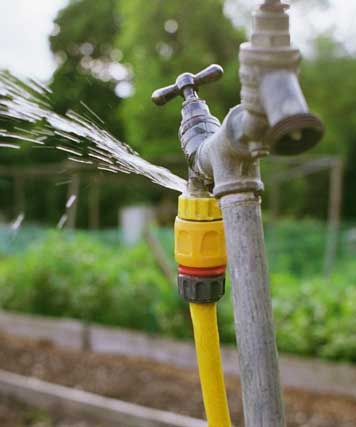Exactly how to Examine If Your Home Has a Concealed Leakage
Exactly how to Examine If Your Home Has a Concealed Leakage
Blog Article
How do you feel with regards to Leaking water lines?

Early discovery of dripping water lines can minimize a prospective disaster. Apart from conserving you cash, it will decrease the aggravation and also aggravation. The minute you find a leakage, calling your plumber for repair work is the most effective remedy. Nevertheless, some tiny water leakages might not show up. Right here are some hacks that assist if you can not identify it with your naked eyes.
1. Examine the Water Meter
Every residence has a water meter. Examining it is a proven way that helps you find leakages. For starters, turn off all the water resources. Make certain no person will flush, use the faucet, shower, run the washing equipment or dishwashing machine. From there, go to the meter and watch if it will alter. Because no one is utilizing it, there must be no motions. That shows a fast-moving leakage if it moves. Also, if you identify no changes, wait an hour or more as well as examine back once again. This suggests you might have a slow leakage that could also be below ground.
2. Inspect Water Usage
If you spot abrupt changes, regardless of your intake being the very same, it implies that you have leakages in your plumbing system. An abrupt spike in your expense indicates a fast-moving leakage.
On the other hand, a steady increase monthly, even with the very same practices, shows you have a slow leak that's also slowly intensifying. Call a plumber to completely examine your residential or commercial property, especially if you really feel a warm area on your flooring with piping underneath.
3. Do a Food Coloring Examination
When it comes to water usage, 30% comes from commodes. If the color somehow infiltrates your dish during that time without flushing, there's a leakage between the tank and dish.
4. Asses Exterior Lines
Do not fail to remember to inspect your outside water lines as well. Examination faucets by connecting a garden hose pipe. Must water permeate out of the link, you have a loose rubber gasket. Replace this and ensure all connections are tight. It will aid obtain it expertly examined and also kept every year if you've obtained a sprinkler system. One little leakage can throw away tons of water and increase your water expense.
5. Analyze the circumstance and inspect
Home owners need to make it a routine to inspect under the sink counters and also inside cupboards for any kind of bad odor or mold and mildew growth. These 2 warnings show a leakage so timely attention is called for. Doing routine inspections, even bi-annually, can save you from a major issue.
Inspect for discolorations and deteriorating as most pipes and also devices have a life span. If you suspect leaking water lines in your plumbing system, don't wait for it to rise.
Early detection of dripping water lines can reduce a prospective catastrophe. Some little water leakages might not be visible. Examining it is a guaranteed method that helps you uncover leaks. One small leak can throw away tons of water and increase your water expense.
If you presume leaking water lines in your plumbing system, do not wait for it to rise.
WARNING SIGNS OF WATER LEAKAGE BEHIND THE WALL
PERSISTENT MUSTY ODORS
As water slowly drips from a leaky pipe inside the wall, flooring and sheetrock stay damp and develop an odor similar to wet cardboard. It generates a musty smell that can help you find hidden leaks.
MOLD IN UNUSUAL AREAS
Mold usually grows in wet areas like kitchens, baths and laundry rooms. If you spot the stuff on walls or baseboards in other rooms of the house, it’s a good indicator of undetected water leaks.
STAINS THAT GROW
When mold thrives around a leaky pipe, it sometimes takes hold on the inside surface of the affected wall. A growing stain on otherwise clean sheetrock is often your sign of a hidden plumbing problem.
PEELING OR BUBBLING WALLPAPER / PAINT
This clue is easy to miss in rooms that don’t get much use. When you see wallpaper separating along seams or paint bubbling or flaking off the wall, blame sheetrock that stays wet because of an undetected leak.
BUCKLED CEILINGS AND STAINED FLOORS
If ceilings or floors in bathrooms, kitchens or laundry areas develop structural problems, don’t rule out constant damp inside the walls. Wet sheetrock can affect adjacent framing, flooring and ceilings.
https://www.servicemasterbyzaba.com/blog/how-to-detect-water-leakage-in-walls/

I am just very enthusiastic about Locating water leaks and I am hoping you liked our piece. If you enjoyed reading our blog posting kindly remember to share it. Thank you for your time. Visit us again soon.
Report this page